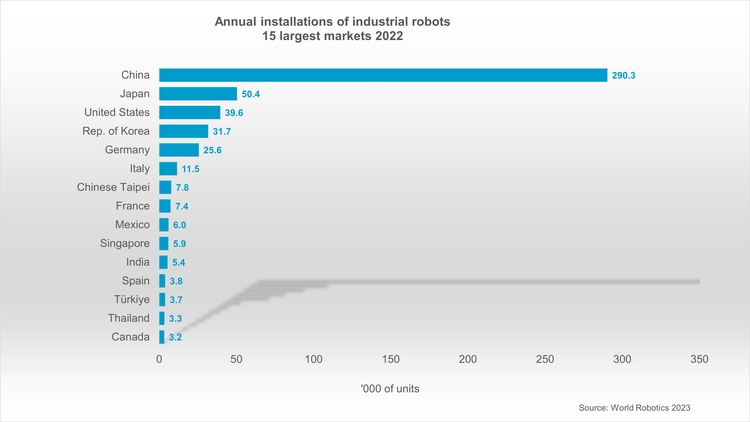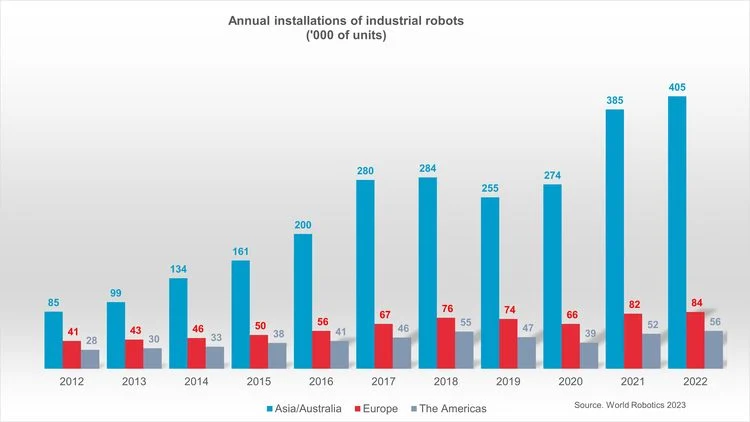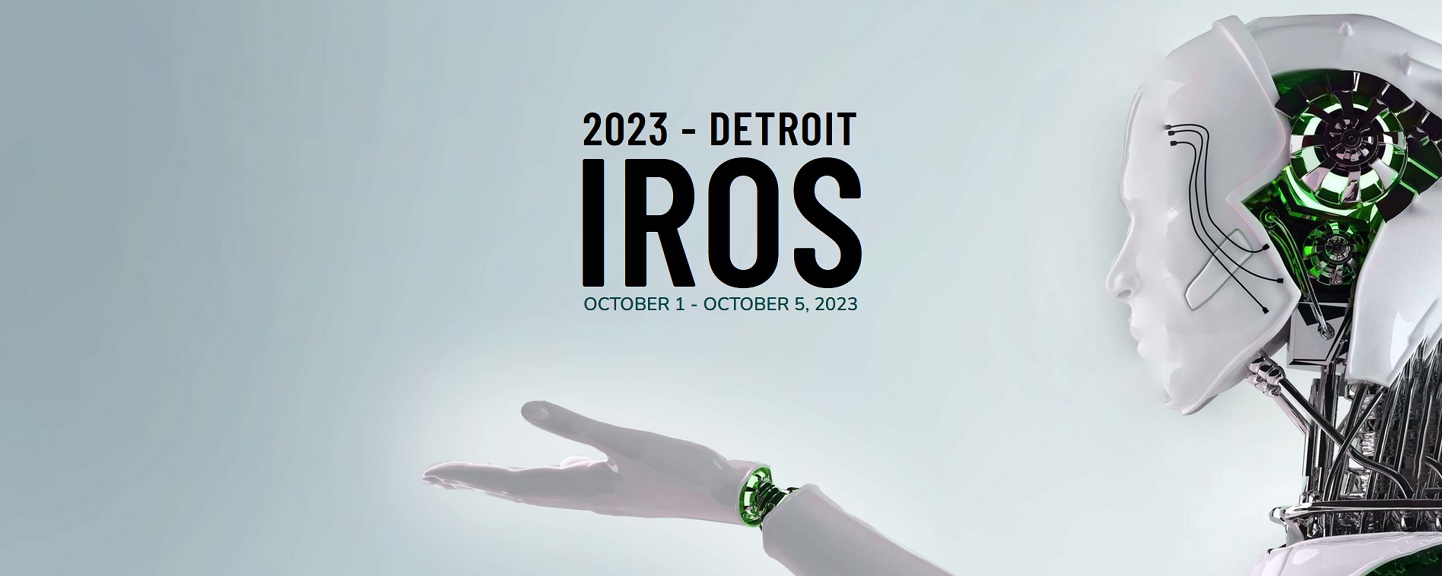Scaling up learning across many different robot types
Scaling up learning across many different robot types
Morphing robots can grip, climb and crawl like insects
Scaling up learning across many different robot types
What Place Do Robots Have in the Future of eCommerce?
Instant evolution: AI designs new robot from scratch in seconds
Researchers are tapping into psychology to improve AI to help robots interact more like humans
BitFlow Enters into Definitive Agreement to be Acquired by Advantech
World Robotics 2023 report: Asia ahead of Europe and the Americas
The new World Robotics report recorded 553,052 industrial robot installations in factories around the world – a growth rate of 5% in 2022, year-on-year. By region, 73% of all newly deployed robots were installed in Asia, 15% in Europe and 10% in the Americas.

“The world record of 500,000 units was exceeded for the second year in succession,” says Marina Bill, President of the International Federation of Robotics. “In 2023 the industrial robot market is expected to grow by 7% to more than 590,000 units worldwide.”

Asia, Europe and the Americas – overview
China is by far the world´s largest market. In 2022, annual installations of 290,258 units replaced the previous record of 2021 by growth of 5%. This latest gain is remarkable since it even tops the 2021 result that was a 57% jump compared to 2020. To serve this dynamic market, domestic and international robot suppliers have established production plants in China and continuously increased capacity. On average, annual robot installations have grown by 13% each year (2017-2022).
Robot installations in Japan were up by 9% to 50,413 units, exceeding the pre-pandemic level of 49,908 units in 2019. The peak level remains at 55,240 units in 2018. The country ranks second to China in size of market for industrial robots. Annual installations gained 2% on average per year (2017-2022). Japan is the world´s predominant robot manufacturing country with a market share of 46% of the global robot production.
The market in the Republic of Korea rose by 1% – installations reached 31,716 units in 2022. This was the second year of marginal growth, following four years of declining installation figures. The Republic of Korea remains the fourth largest robot market in the world, following the United States, Japan, and China.

Europe
The European Union remains the world´s second largest market (70,781 units; +5%) in 2022. Germany is one of the top five adopters worldwide with a market share of 36% within the EU. Germany´s installations went down by 1% to 25,636 units. Italy follows with a market share of 16% within the EU – installations grew by 8% to 11,475 units. The third largest EU market, France, recorded a regional market share of 10% and gained 13%, installing 7,380 units in 2022.
In the post-Brexit United Kingdom, industrial robot installations were up by 3% to 2,534 units in 2022. This is less than a tenth of Germany´s sales.
The Americas
In the Americas, installations were up 8% to 56,053 units in 2022, surpassing the 2018 peak level (55,212 units). The United States, the largest regional market, accounted for 71% of the installations in the Americas in 2022. Robot installations were up by 10% to 39,576 units. This was just shy of the peak level of 40,373 units achieved in 2018. The main growth driver was the automotive industry that displayed surging installations by +47% (14,472 units). The share of the automotive industry has now grown back to 37%, followed by the metal and machinery industry (3,900 units) and the electrical/electronics industry (3,732 units).
The two other major markets are Mexico – here installations grew by 13% (6,000 units) – and Canada, where demand dropped by 24% (3,223 units). This was the result of lower demand from the automotive industry – the strongest adopter.
Brazil is an important production site for motor vehicles and automotive parts: The International Organization of Motor Vehicle Manufacturers (OICA) reports an output of 2.4 million vehicles in 2022. This shows the huge potential for automation in the country. Annual installation counts grew rather slowly with cyclical ups and downs. In 2022, 1,858 robots were installed. This was 4% more than in the previous year.
Outlook
The year 2023 will be characterized by a slowdown of the global economic growth. Robot installations in 2023 are not expected to follow this pattern. There is no indication that the overall long-term growth trend will come to an end soon: rather the contrary will be the case. The mark of 600,000 units installed per year worldwide is expected to be reached in 2024.
#IROS2023: A glimpse into the next generation of robotics
The 2023 EEE/RSJ International Conference on Intelligent Robots and Systems (IROS 2023) kicks off today at the Huntington Place in Detroit, Michigan. This year’s theme, “The Next Generation of Robotics,” is a call to the young and senior researchers to create a forum where the past, present, and future of robotics converge.
The program of IROS 2023 is a blend of theoretical insights and practical demonstrations, designed to foster a culture of innovation and collaboration. Among the highlights are the plenary and keynote talks by eminent personalities in the field of robotics.
Plenaries and keynotes
On the plenary front, Marcie O’Malley from Rice University will delve into the realm of robots that teach and learn with a human touch. Yuto Nakanishi of GITAI, Japan, will share his insights on the challenges of developing space robots for building a moonbase. Matt Johnson-Roberson from Carnegie Mellon University will explore the shared history and convergent future of AI and Robotics.
The keynote sessions are equally thought-provoking. On Monday, October 2nd, Sven Behnke from the University of Bonn, Germany, will discuss the transition from intuitive immersive telepresence systems to conscious service robots, while Michelle Johnson from the University of Pennsylvania, USA, will talk about the journey towards more inclusive rehabilitation robots. Rebecca Kramer-Bottiglio from Yale University, USA, will also share insights on shape-shifting soft robots that adapt to changing tasks and environments.
On Tuesday, October 3rd, Kostas Alexis from the Norwegian University of Science and Technology, Norway, will share experiences from the DARPA Subterranean Challenge focusing on resilient robotic autonomy. Serena Ivaldi from Inria, France, will discuss the transition from humanoids to exoskeletons, aiming at assisting and collaborating with humans. Mario Santillo from Ford Motor Company, USA, will provide a glimpse into the future of manufacturing automation.
The series continues on Wednesday, October 4th, with Moritz Bächer (Switzerland) and Morgan Pope (USA) from Disney Research discussing the design and control of expressive robotic characters. Tetsuya Ogata from Waseda University/AIST, Japan, will delve into deep predictive learning in robotics, optimizing models for adaptive perception and action. Lastly, Teresa Vidal-Calleja from the University of Technology Sydney, Australia, will talk about empowering robots with continuous space and time representations.
Competitions
The competitions segment of IROS 2023 will be a space for innovation and creativity. The Functional Fashion competition invites teams to design and demonstrate robotic clothing that is as aesthetically pleasing as it is functional. The F1/10 Autonomous Racing challenges participants to build a 1:10 scaled autonomous race car and compete in minimizing lap time while avoiding crashes. The Soft Robotics Balloon Robots competition encourages the creation of locomoting and swimming soft robots using balloons as a substrate, exploring rapid design and deployment of soft robotic structures.
Technical programme & demonstrations
The technical sessions and workshops/tutorials at IROS 2023 are designed to foster a rich exchange of ideas among the attendees. These sessions will feature presentations on cutting-edge research and innovative projects from across the globe, providing a platform for researchers to share their findings, receive feedback, and engage in meaningful discussions. In additions, the demonstrations segment will bring theories to life as participants showcase their working prototypes and models, offering a tangible glimpse into the advancements in robotics.
Participate in IROS 2023 remotely with Ohmni telepresence robots
If you are unable to participate in the conference in person, Ohmnilabs has provided three of their Ohmni telepresence robots to facilitate participation in the conference virtually. The telepresence robots will be active from October 2-4 from 9:00 a.m.- 6:00 p.m. EDT. You can secure a time slot in advance using this link.
The telepresence robots will allow you to:
- Explore the exhibit hall and speak with exhibitors
- Interact with authors and other attendees during interactive poster sessions
- Attend a plenary or keynote presentation
You can check in real-time here to see if any of the robots are available throughout the day.
Watch out our blog during the following days for updates and results from the best paper awards. And enjoy IROS 2023!
Robot Talk Episode 55 – Sara Adela Abad Guaman

Claire chatted to Sara Adela Abad Guaman from University College London about adaptable robots inspired by nature.
Sara Adela Abad Guaman is a Lecturer at University College London’s Mechanical Engineering Department. She is also the head of the Adaptable Robotics Lab. Inspired by biological organisms, Sara aims to develop robots and mechanical systems with enhanced adaptability to variable environmental conditions. Her vision is to use bioinspiration and morphological computation to address global challenges such as climate change, biodiversity loss, and sustainability.
